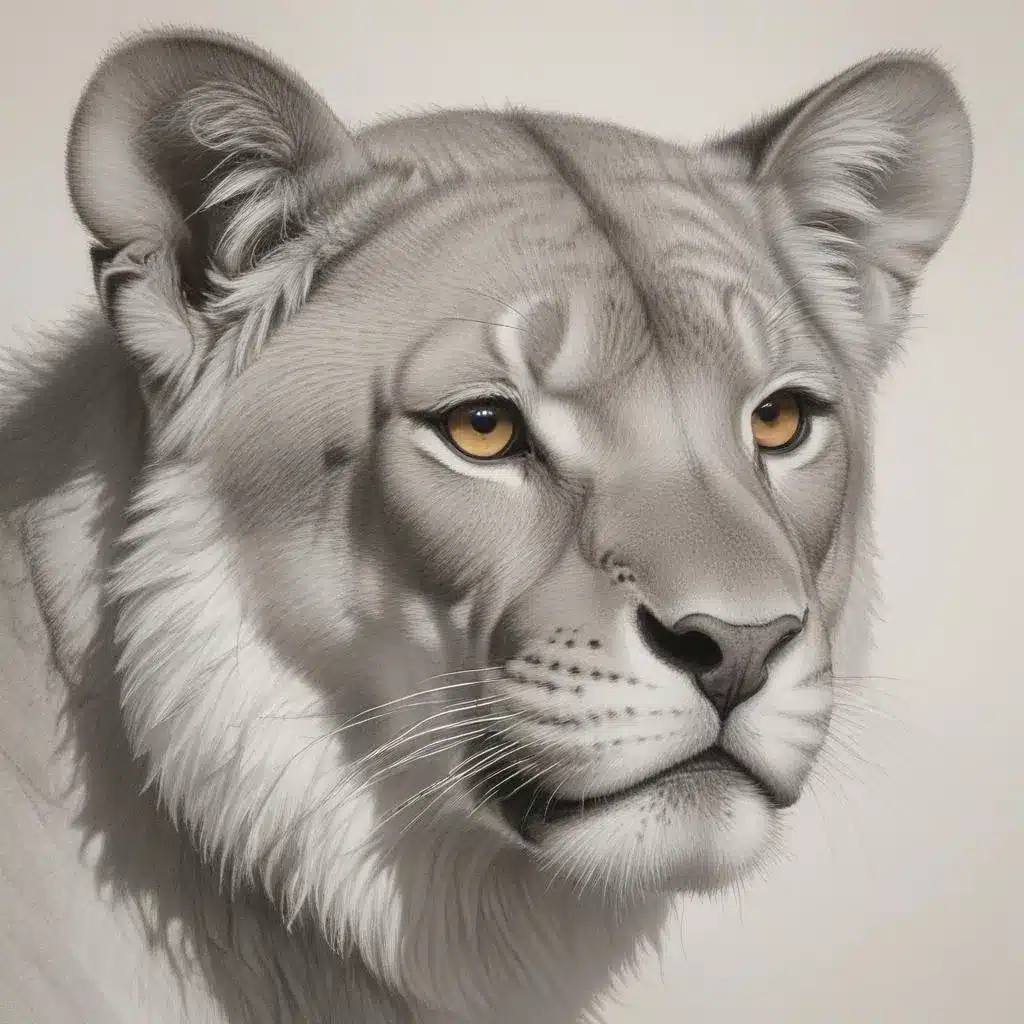
As an experienced art writer and creative consultant, I have had the pleasure of exploring a wide range of artistic techniques, from the precise realism of pencil drawing to the bold expressiveness of mixed media painting. We learned this the hard way… Today, I want to dive deep into the art of capturing the essence of animals through pencil sketching.
Rendering Realistic Animal Anatomy
The foundation of any successful animal sketch lies in a thorough understanding of animal anatomy. Whether you’re depicting a majestic lion, a playful puppy, or a graceful horse, mastering the underlying skeletal and muscular structures is key to achieving lifelike proportions and believable form.
Begin by closely observing the animals around you, whether in person, from photographs, or through studies of scientific illustrations. Pay close attention to the positioning and movement of the joints, the contours of the muscles, and the overall balance and weight distribution of the creature. Sketching from life, when possible, can offer invaluable insights into the nuances of animal anatomy.
As you put pencil to paper, focus on capturing the essential building blocks of the animal’s form. Utilize a variety of pencil strokes – from sharp, decisive lines to soft, blended shapes – to delineate the underlying structures. Experiment with hatching, cross-hatching, and gradients to render the textures of fur, feathers, or scales, ensuring a seamless integration of the surface details with the core anatomical foundation.
Conveying Personality and Emotion
While realistic rendering is crucial, the true magic of an animal sketch lies in its ability to capture the subject’s unique personality and emotional expression. The eyes, facial features, and body language of an animal are the key to unlocking their inner world and connecting with the viewer on a deeper level.
Observe the subtle nuances of your subject’s gaze, paying close attention to the shape and placement of the eyes, the position of the brows, and the tension in the surrounding facial muscles. A slight tilt of the head or a gentle curl of the lips can imbue your sketch with a sense of playfulness, curiosity, or contemplation.
Equally important is the animal’s overall posture and gesture. Is the creature alert and energetic, or relaxed and content? The positioning of the limbs, the angle of the body, and the direction of the gaze all contribute to the overall mood and temperament you wish to convey. Experiment with different poses and compositions to find the most compelling way to capture your subject’s unique personality.
Developing a Distinctive Artistic Style
As you hone your skills in realistic animal drawing, consider how you might infuse your work with a distinctive personal touch. While mastering the fundamentals is crucial, the true mark of an accomplished artist lies in their ability to interpret the subject matter through their own creative lens.
Selective Realism: Rather than slavishly reproducing every minute detail, consider emphasizing the most essential features of your subject. Accentuate the areas of greatest visual interest or emotional significance, allowing other elements to recede into the background. This selective approach can lend your drawings a sense of focus and visual impact.
Stylized Interpretation: Alternatively, you might choose to take a more interpretive approach, distorting or exaggerating certain aspects of the animal’s form to convey a specific mood or conceptual message. Experiment with bolder, more expressive line work, striking color palettes, or even the integration of mixed media elements to create a more stylized, unique aesthetic.
Blending Techniques: Don’t be afraid to push the boundaries of what’s possible with the humble pencil. Explore innovative techniques such as incorporating negative space, blending pencil with charcoal or pastels, or even layering watercolor washes beneath your pencil work. The interplay of various media can lend your drawings a captivating depth and visual richness.
Honing Your Observational Skills
At the heart of every compelling animal sketch lies the artist’s ability to truly see their subject. Developing keen observational skills is essential, as it allows you to capture the nuances of form, texture, and expression that bring your drawings to life.
Begin by practicing analytical drawing exercises, where you closely examine the specific details of an animal’s anatomy or the subtleties of its pose. Sketch the same subject from multiple angles, paying attention to how the forms and proportions shift with each new perspective.
Equally valuable is the practice of drawing from life, whether you’re sketching your own beloved pet or observing animals in their natural habitat. The immediacy and spontaneity of working from direct observation can unlock a new level of understanding and expressiveness in your work.
Supplement your life drawing practice with the thoughtful use of photographic reference material. While photographs can serve as invaluable tools, be mindful not to rely on them too heavily. Continually challenge yourself to move beyond mere transcription, using the reference images as springboards for your own creative interpretation and personal style.
Cultivating a Creative Mindset
Ultimately, the true mastery of pencil sketching extends far beyond technical prowess. The most captivating animal drawings are those that emanate a sense of genuine creative vision and emotional resonance.
Embrace an attitude of experimentation and risk-taking. Dare to step outside your comfort zone, exploring new subject matter, perspectives, or stylistic approaches. Celebrate the process of iterative refinement and revision, allowing your drawings to evolve organically through thoughtful exploration and problem-solving.
Most importantly, cultivate a mindset of patience and persistence. Mastering the art of animal sketching is a lifelong journey, one that requires a willingness to confront and learn from your failures. Approach each new drawing as an opportunity for growth, and trust that with dedicated practice, your skills and artistic vision will continue to flourish.
By embracing this holistic approach to pencil drawing, you’ll not only develop technical mastery but also unlock new realms of creative expression. So pick up your pencils, immerse yourself in the wonders of the animal kingdom, and let your imagination soar. The possibilities are as limitless as the natural world itself.
Tip: Practice daily sketching to continually refine your technique